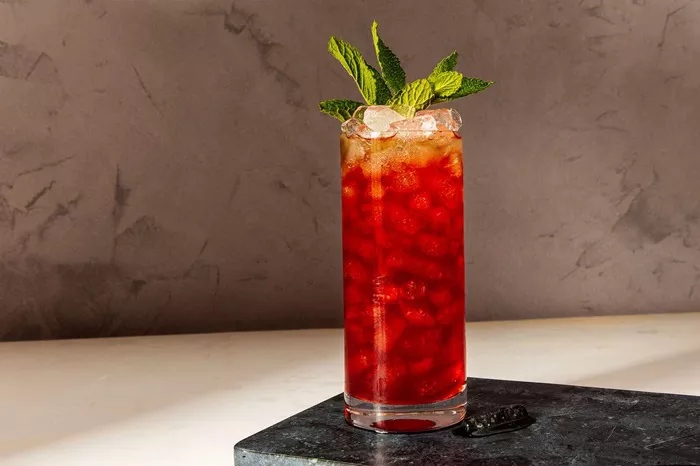In the realm of alcoholic beverages, nuances in flavor, production methods, and cultural significance distinguish one libation from another. Two such beverages that often cause confusion among enthusiasts are ouzo and liqueur. Despite both falling under the category of spirits, these two drinks offer distinct characteristics that set them apart. Understanding the differences between ouzo and liqueur is not only valuable for connoisseurs but also for those looking to broaden their palate and appreciation for diverse libations.
Origins and History
To comprehend the disparity between ouzo and liqueur, it’s essential to delve into their origins and historical contexts. Ouzo, a traditional Greek spirit, has roots tracing back centuries. Its production involves distillation of grape pomace or grain, infused with various botanicals such as anise, fennel, and coriander. The result is a clear spirit with a distinct licorice flavor and a characteristic milky-white appearance when mixed with water, known as the louche effect. On the other hand, liqueur, derived from the Latin word “liquifacere,” meaning “to dissolve,” encompasses a broader category of sweetened spirits infused with fruits, herbs, spices, flowers, or nuts. Liqueurs have a global presence, with diverse variations originating from different countries and cultures, each boasting unique flavors and production techniques.
Production Process
The disparity between ouzo and liqueur extends to their production processes. Ouzo undergoes a meticulous distillation method, typically employing copper pot stills. The base alcohol, infused with botanicals, is distilled multiple times to achieve the desired potency and flavor profile. Anise plays a pivotal role in ouzo’s characteristic taste, contributing to its licorice-like essence. Following distillation, ouzo is often diluted with water to lower its alcohol content and induce the louche effect, resulting in its signature opalescent appearance. In contrast, liqueurs are produced through a variety of methods, including maceration, infusion, and distillation. Fruits, herbs, or spices are steeped in alcohol or distilled spirits, extracting their flavors over time. This flavored base is then sweetened with sugar syrup, honey, or other sweetening agents, resulting in a harmonious blend of sweetness and flavor complexity.
See Also: Unraveling the Enigma: The Best Absinthe in the World
Flavor Profiles
One of the most discernible differences between ouzo and liqueur lies in their flavor profiles. Ouzo boasts a dominant anise flavor, accompanied by notes of fennel, coriander, and other botanicals. Its distinctive taste is often described as refreshing, with a subtle sweetness and a pronounced licorice undertone. When mixed with water, ouzo undergoes a transformation, turning milky-white and releasing its full aroma and flavor spectrum. In contrast, liqueurs offer a diverse array of flavors, ranging from fruity and floral to herbal and spiced. Whether it’s the citrusy zest of orange liqueur, the velvety richness of chocolate liqueur, or the aromatic warmth of herbal liqueurs like Chartreuse, each variation provides a unique sensory experience. Liqueurs can be enjoyed neat, over ice, or as a versatile ingredient in cocktails, adding depth and complexity to mixed drinks.
Cultural Significance
Beyond their sensory attributes, ouzo and liqueur hold significant cultural importance in their respective regions. Ouzo is deeply ingrained in Greek culture, often enjoyed as an aperitif or alongside meze, a selection of small dishes shared with friends and family. Its consumption is accompanied by tradition and ritual, such as the customary addition of water to unlock its full flavor potential. Ouzo also serves as a symbol of Greek hospitality and conviviality, fostering social bonds and fostering camaraderie. In contrast, liqueurs have diverse cultural associations, reflecting the culinary heritage and traditions of their country of origin. From the rich, herbal liqueurs of Italy to the aromatic floral liqueurs of France, each variety carries with it a sense of cultural identity and heritage, often intertwined with local customs and celebrations.
Mixology and Culinary Applications
The distinction between ouzo and liqueur becomes particularly evident in their applications in mixology and culinary endeavors. Ouzo, with its bold anise flavor and louche effect, serves as a key ingredient in traditional Greek cocktails such as the Ouzo Sour or Ouzo and Tonic. Its versatility extends to culinary applications, where it can be used to impart depth and complexity to savory dishes, such as seafood stews or grilled meats. Additionally, ouzo-infused desserts, like loukoumades (Greek honey puffs) drizzled with ouzo syrup, showcase its sweet and aromatic qualities. Conversely, liqueurs offer a broad spectrum of flavors that lend themselves well to cocktails, desserts, and culinary creations. From classic cocktails like the Margarita and Cosmopolitan to decadent desserts like tiramisu and crème brûlée, liqueurs add depth, sweetness, and complexity to a wide range of culinary delights.
Regulatory Considerations
The regulatory framework governing ouzo and liqueur production varies across different regions and countries. In Greece, ouzo is subject to strict regulations stipulating its ingredients, production methods, and labeling requirements. To be classified as ouzo, the spirit must contain a minimum of 20% alcohol by volume and be flavored predominantly with anise. Additionally, Greek law prohibits the addition of artificial colors or flavorings to ouzo, ensuring its authenticity and integrity. Similarly, liqueur production is governed by regulations specific to each country or region. In the European Union, liqueurs fall under the category of spirits drinks and are subject to regulations outlined in the Spirit Drinks Regulation. This legislation sets standards for ingredients, labeling, and geographical indications, ensuring transparency and consumer protection.
Conclusion
In conclusion, the difference between ouzo and liqueur extends beyond their superficial similarities as alcoholic beverages. From their origins and production processes to flavor profiles and cultural significance, each offers a unique sensory experience and holds a distinct place in the world of spirits. While ouzo captivates with its bold anise flavor and milky-white louche effect, liqueurs entice with a myriad of flavors, ranging from fruity and floral to herbal and spiced. Whether enjoyed neat, mixed into cocktails, or incorporated into culinary creations, ouzo and liqueur embody centuries of tradition, craftsmanship, and cultural heritage, enriching the lives of those who savor their complexity and depth.


